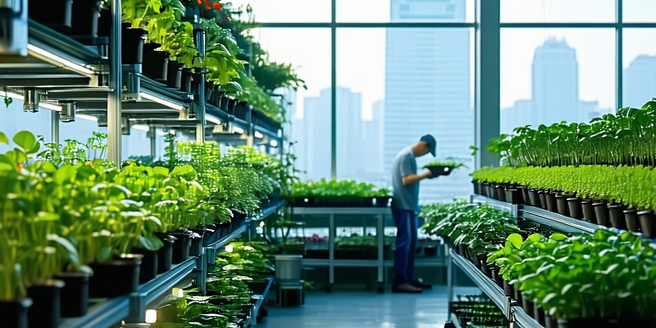
Vertical Farming Techniques Revolutionizing Urban Areas
Vertical farming is transforming urban landscapes by utilizing vertically stacked layers to grow produce within controlled environments. These systems reduce the need for large expanses of land and use innovative lighting and hydroponic technologies to optimize plant growth. By implementing vertical farms, cities can produce ample fresh produce locally, reducing transportation emissions and increasing food security. This innovative approach also contributes to job creation within urban areas, providing new employment opportunities in sustainable agriculture. This technique also allows for year-round farming, regardless of weather conditions, making it a sustainable approach to feeding growing populations. Cities adopting vertical farming benefit from shorter supply chains, contributing to a reduction in food waste.
Aquaponics: Integrating Fish Farming with Vegetables
Aquaponics combines fish farming with hydroponics to create a symbiotic environment where waste produced by fish supplies nutrients for plants. This innovative approach to agriculture is gaining popularity in both rural and urban areas. This closed-loop system efficiently sustains both crops and fish, minimizing water usage and waste discharge. By cultivating both fish and plants in urban settings, aquaponics provides a sustainable solution to food production challenges in cities. This practice not only maximizes resource use but also offers diverse produce options and potential for fresh fish supply, contributing to local food security while decreasing dependency on external sources.
Rooftop Gardens: Maximizing Space in Dense Cities
Rooftop gardens offer urban areas a practical way to utilize unused space for agriculture, integrating greenery into the cityscape. These gardens can help combat urban heat, improve air quality, and create aesthetic value while producing fresh produce. By transforming roofs into productive farmland, cities can enhance biodiversity and provide habitats for pollinators. Additionally, rooftop gardens can reduce energy consumption by insulating buildings, thus lowering heating and cooling costs. Rooftop gardens also promote community engagement as they can be shared spaces for residents, contributing to sustainable urban agriculture and localized food systems. They provide a multi-functional space combining food production with environmental and social benefits.
Hydroponic Systems: Efficient Water Use in Farming
Hydroponic systems are pivotal in urban farming due to their highly efficient use of water and space. By growing plants in nutrient-rich solutions rather than soil, hydroponics dramatically reduces water consumption and allows for production in areas with limited land. This innovative approach can also improve food security in densely populated areas. This method is adaptable to indoor environments, enabling the cultivation of fresh produce year-round. Hydroponic systems support sustainable agriculture by mitigating the impacts of droughts and soil degradation, offering a scalable solution for urban food production that is both eco-friendly and resource-efficient.
Community Gardens: Empowering Local Food Production
Community gardens empower urban populations by transforming underutilized land into productive agricultural spaces. These gardens foster local food production, enhance community cohesion, and increase access to fresh produce, essential for food security. Participants often find a sense of pride and ownership in contributing to these shared spaces. They serve as educational hubs, teaching participants about sustainable growing practices and nutrition. Community gardens can also reduce food miles and promote environmental stewardship by encouraging urban dwellers to engage directly with the food supply chain. As communal spaces, they are vital for social interaction, improving urban resilience and promoting healthier lifestyles.
Technology’s Role in Enhancing Urban Farming Practices
Technology is at the forefront of revolutionizing urban farming by enhancing efficiency and productivity. Innovative tools such as IoT sensors, automated systems, and data analytics are optimizing growing conditions and resource management. These advancements enable urban farmers to monitor plant health, water usage, and environmental factors in real time, leading to more precise and sustainable farming practices. The integration of technology not only increases yields and reduces waste but also democratizes agriculture by providing accessible tools for small-scale urban farms. As technology continues to evolve, its role will be crucial in addressing the food security needs of rapidly urbanizing areas.
